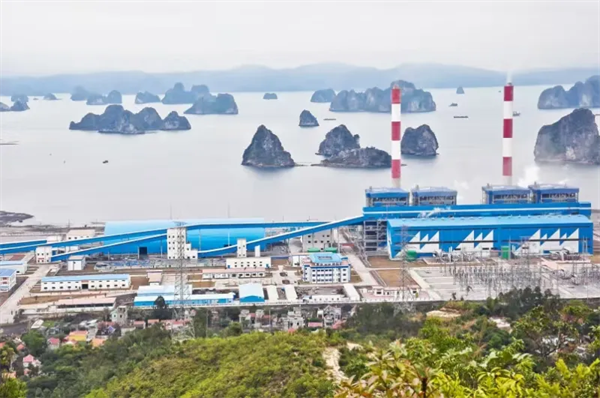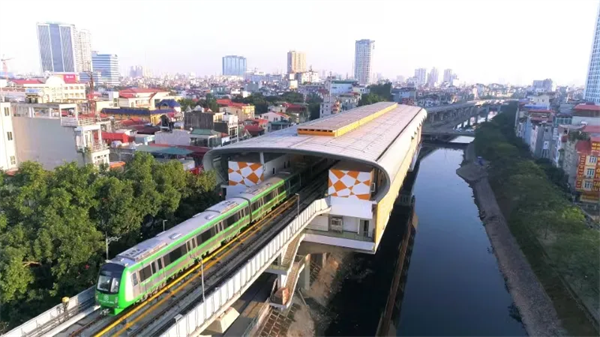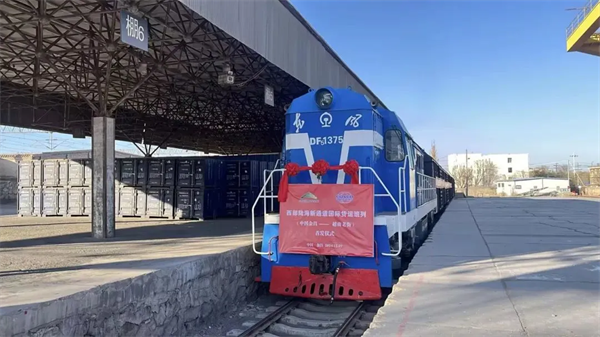China’s central state-owned enterprises (SOEs) play an active role in advancing the Belt and Road Initiative (BRI) forward. Through active involvement in Vietnam’s infrastructure projects, industrial investment, and cooperation in new sectors, these entities have bolstered regional connectivity, industrial growth and stakeholders, deepening people-to-people ties.
Mutually beneficial economic cooperation and enhanced connectivity
China’s central SOEs have long played an active role in developing Vietnam’s railways, power supply systems, and urban infrastructure, helping improve connectivity and support economic growth.

A view of the Phase I BOT project of the Vinh Tan 1 Thermal Power Plant [Photo/sasac.gov.cn]
In 2018, the Phase I BOT project of the Vinh Tan 1 Thermal Power Plant, invested and operated by China Southern Power Grid (CSG), officially commenced operations. As the first Chinese BOT power investment project in Vietnam, it is also one of the earliest Belt and Road projects implemented. Equipped with two 620-megawatt ultra-supercritical coal-fired generating units and 23 energy-saving and emission-reduction technologies, it serves as a benchmark for “advanced, reliable, and green” power plant. Since its commissioning, the plant has generated over 52.5 billion kWh of electricity, with an annual output of about 8 billion kWh, strongly supporting southern Vietnam’s economic and social development.
Another milestone, the 2×300MW coal-fired power project in Thanh pho Cam Pha, marks Harbin Electric Corporation’s first full export of 300MW-class units. Completed in September 2011, it now serves as a key power source in northern Vietnam. The Phase II plant of Vietnam Coastal Power Station, developed by China Huadian Corporation Ltd, currently houses the largest single-unit capacity of thermal power in Vietnam. Meanwhile, China Energy Engineering Group Co., Ltd. invested $1.87 billion in the Hai Duong 2×600MW coal-fired power project, one of the largest single investments by a Chinese enterprise in Vietnam, generating 8.1 billion kWh annually.

The 2×300MW coal-fired power project in Thanh pho Cam Pha, Vietnam [Photo/sasac.gov.cn]
Beyond thermal power, central SOEs have expanded into wind, solar, and hydropower sectors while providing high-standard power transmission services. State Power Investment Corporation Limited’s Vinh Hao Photovoltaic Project utilizes advanced Chinese solar technologies and integrates seamlessly with Vietnam’s national grid. Power Construction Corporation of China’s Ca Mau 350MW offshore wind power project is currently the largest of its kind in Vietnam. Dongfang Electric Corporation’s hydropower equipment accounts for over 12.6 percent of Vietnam’s hydropower market. In January 2022, China National Machinery Industry Corporation signed on to participate in the expansion of the Hoa Binh Hydropower Plant, scheduled for full commercial operation in the first half of 2026.

The Ca Mau 350MW offshore wind power project under construction [Photo/sasac.gov.cn]
Infrastructure and manufacturing cooperation
Central SOEs have also supported Vietnam’s modernization by constructing commercial and industrial facilities. For example, the Nam Thang Long residential and commercial complex in Hanoi, designed by the China Academy of Building Research, integrates advanced Chinese architectural technology while incorporating Vietnamese cultural features and market demands.

The Cat Linh–Ha Dong Metro Line [Photo/sasac.gov.cn]
Urban transit has also seen strong cooperation. The Cat Linh–Ha Dong Metro Line, constructed by China Railway Sixth Group Co., Ltd., is the first urban light rail line in Vietnam and a flagship Belt and Road project. Officially opened in November 2021, the 13-kilometer line has served more than 34 million passengers as of March.
China’s advanced manufacturing sector is increasingly active in Vietnam. On March 15, China National Petroleum Corporation’s high-quality rubber powder products entered the Vietnamese market for the first time. On April 13, a total of 24 liquid-mixing vulcanizers from Sinochem Holdings Corporation Ltd.’s subsidiary passed inspection and are set for shipment to Vietnam. Pharmaceutical products from China National Pharmaceutical Group Co., Ltd.’s VCP company now cover 95 percent of the market, and China National Building Material Group Co., Ltd. built Vietnam’s first high-tech ultra-clear float glass production line.
Enhancing logistics and cross-border trade
Logistics connectivity is also improving. On December 7, 2024, a train carrying 300 tons of premium ammonium chloride fertilizer departed from Jinchang, Gansu Province, marking the inaugural trip of the international rail-sea intermodal train along the new western land-sea corridor (Jinchang–Hekou North–Lao Cai). The project broke ground for fertilizer exports from Jinchang to ASEAN markets. In addition, China COSCO SHIPPING Corporation Limited has developed a customized logistics plan using covered wagons, reducing delivery time by 4–5 days compared to traditional sea-rail modes and cutting overall logistics costs by about 20 percent.

International rail-sea intermodal train along the new western land-sea corridor (Jinchang–Hekou North–Lao Cai) [Photo/sasac.gov.cn]
China Logistics Group Co., Ltd. is also developing cross-border cold-chain routes and modern logistics infrastructure. In late January, a batch of fresh octopus from a seafood factory in Long An, Vietnam, arrived at Kunming via the China-Laos Railway “Lancang-Mekong Express.” The journey was slashed by one-third than that of traditional sea shipping.
At the Friendship Pass in Pingxiang, Guangxi, home to China’s largest land port for fruit trade, China Telecom Corporation Limited has deployed full 4G/5G coverage and optical fiber networks. The bonded zone is actively building a smart port with new intelligent customs clearance systems. China Mobile Communications Group Co., Ltd. supports the digitalization of border crossings at Friendship Pass, Longbang, and Hekou, improving overall traffic and governance capacity.
Stronger people-to-people ties
Cultural exchanges are also flourishing. The Detian-Ban Gioc Waterfall Cross-Border Tourism Cooperation Zone, officially opened in October 2024, is the first of its kind in China. The site now offers joint attractions and smart tourism services, attracting visitors from both countries.
CSG has supported over 130 Vietnamese students to study in China since 2010 and has trained over 1,000 professionals in the power sector. Chinese companies also engage local communities through cultural activities and talent exchanges.
From energy and infrastructure to culture and education, Chinese SOEs are working hand in hand with Vietnam to deepen cooperation and deliver shared benefits under the BRI framework.
(Executive editor: Wang Ruoting)